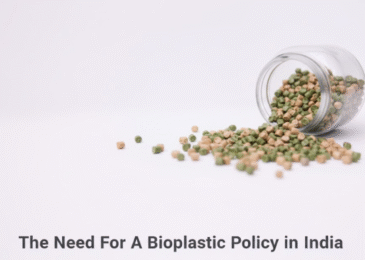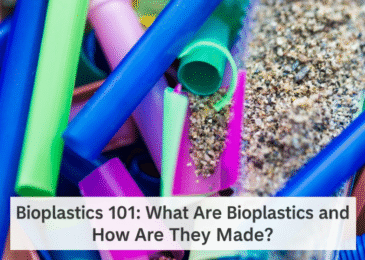Plastic pollution is no longer a distant problem. It is a crisis visible where we live and in the rivers and oceans that sustain us. It is estimated that 400 million tons of plastic are produced each year, and 11 million tons enter the ocean annually.
That is why plastic waste laws are now at the center of environmental policy. Rwanda, Kenya, Chile, Colombia, and Peru have pushed through strict laws against single-use plastics. They have demonstrated that a plastic ban backed by enforcement, alternatives, and public support can fight plastic pollution.
Let’s begin with the countries that set the global benchmark for plastic bag bans.
Countries With the Strictest Plastic Waste Laws
1. Kenya
When people ask which country has the strictest plastic ban, they are surprised to hear about Kenya.
In 2017, Kenya’s Environmental Management and Coordination Act (EMCA) introduced a plastic bag ban through Gazette Notice No. 2356.
It was unlike anything seen before. Here’s why:
- It brought in a complete prohibition on the use, manufacture, and import of all plastic bags.
- Violators faced up to four years in prison or fines reaching $40,000 (4.4 million Kenyan shillings).
And Kenya didn’t just talk about it. Enforcement was very strict:
- Factories were shut down for violations, and there were regular inspections in markets and at the border.
- Effective public awareness campaigns were key to getting the strategy out to everyone.
The effects were plain to see.
- The National Environment Management Authority found that 80% of Kenyans stopped using plastic bags within a few years of the ban.
- The streets became free of plastic litter, and waterways were cleaner.
- Fewer cattle died due to choking on plastic bags.
Kenya proved a simple point. Tough enforcement and harsh penalties produce very satisfactory results.
Hopefully, the great forests of Kenya will never produce another image such as this.

2. Rwanda
Rwanda was one of the first countries in the world to recognize the threat of plastic pollution.
In 2008, the Rwandan government enacted a law banning plastic bags. In 2019, the previous law was repealed, and Law No. 17/2019 came into force.
The new law extended the ban on plastic bags to all forms of single-use plastics.
The new legislation outlines strict rules:
- The sale of single-use plastic items like straws, cutlery, and food containers is prohibited.
- Manufacturers and distributors are responsible for the end-of-life disposal of plastic waste.
What stands out about the plastic ban in Rwanda is not just the law, but how it’s enforced:
- Customs officers and police check for plastic products at borders and airports, ensuring the nation remains a no-plastic zone.
- Spot fines and confiscation are routine, and businesses can lose licenses immediately if they ignore the rules.
Community participation is an important factor that has made the law a success. Every month, Rwandans participate in “Umuganda,” which is a day of community cleaning.
3. Chile
Chile became the first Latin American country to ban plastic bags through Law No. 21.100 in August 2018.
The legislation chose to soften the blow by a gradual phase-out instead of an abrupt ban.
In the first half of 2019, when the law took effect, large stores could offer a maximum of two plastic bags per purchase. This period lasted for six months.
In the next phase, the restriction extended to small businesses. By August 2020, all businesses had to comply.
But Chile didn’t stop at bags. In 2021, a more ambitious Law No. 21.368 arrived.
- It prohibits single-use plastic items like bags, cutlery, and cups at commercial establishments, especially restaurants. For take-away food, only disposable products made of non-plastic materials were allowed to be used.
- Extended Producer Responsibility, or EPR, made producers responsible for the disposal of plastic waste.
Chile stands out because of the way the government worked for the staggered deployment of the plastic ban. Instead of a sudden change, the administration opted for a gradual switchover.
4. Colombia
Like Chile, Colombia also opted for a gradual phase-out approach. It enacted Law 2232 in 2022, establishing a step-by-step ban on single-use plastics. The enforcement began in July 2024 after a two-year preparation phase.
First phase of ban:
- In this phase, plastic bags at points of sale, straws, and stirrers were banned from use.
Second phase of ban:
- In the ongoing second phase, plastic plates, trays, cutlery, cups, and food containers are being phased out. The target is to make Colombia a plastic-free nation by 2030.
At the same time, the Colombian government encourages the quick adoption of biodegradable and compostable alternatives. Resolution 803 of 2024 introduced incentives for companies to produce biodegradable products.
Colombia has provided businesses and consumers eight years to adapt to a gradual transition without any disruption or unemployment.
5. Peru
Peru is fighting plastic pollution with a powerful mix of bans, taxes, and public awareness campaigns. It implemented Law No. 30884 in December 2018, which came into effect in August 2019.
- The law brought in progressive restrictions on single-use plastics in beaches, museums, and public parks.
- There is a ban on the manufacture and import of plastic bags thinner than 50 microns or less than 900 square centimeters in area.
- To speed up the switch to eco-friendly alternatives, there is a single-use plastic tax of $0.03 per bag, which funds environmental programs.
At the same time, the Peruvian government rolled out a massive public awareness campaign which explained why these changes matter for health and the environment.
What’s Next for Global Plastic Policy?
Kenya, Rwanda, Chile, Colombia, and Peru have proved that plastic waste laws work when they are drafted carefully and enforced well.
There are three common elements that other nations can learn from:
- Stiff penalties and strict enforcement.
- Public engagement through awareness campaigns.
- The availability of affordable alternatives.
Looking ahead, the global conversation on plastic bans is accelerating. The United Nations is negotiating a global plastics treaty. The EU and ASEAN nations are tightening their own regulations. For policymakers, now is the time to act and invest in a plastic-free world.
Ukhi is proof that when the right policies are in place, it opens doors for practical solutions. Our bioplastics are designed for real-world needs while supporting both sustainability and rural economies.
As the diagram below shows, global demand in bioplastics is set to grow at a rapid rate, and we shall be at the forefront.

Frequently Asked Questions
Which nation has the world’s strictest plastic waste laws?
Kenya’s Environmental Management Act (EMCA) Gazette Notice No. 2356 is likely the world’s toughest plastic waste law. There is a fine of $40,000 or a jail term of up to four years for violation.
What are the EPR rules in plastic waste management?
EPR rules place the burden of plastic waste disposal squarely on the producers. They are accountable for the entire lifecycle of their plastic products. It is similar to carbon credits, and manufacturers of single-use plastics have to meet annual collection and recycling targets.
Can plastic bans harm the economy?
In the short run, there is an increase in cost as plastic bags, straws, containers, and cutlery have to be replaced by those made from hemp and bagasse. There is also substantial unemployment in the sector. Kenya reported job losses of 80% within the plastic manufacturing sector.
What is the impact of single-use plastic bans on businesses?
Single-use plastic bans cause 40-200% higher alternative costs and 6% average sales declines in ban areas. But as with any change, after the initial disruption, within a year or two, the impact is absorbed.
Are phased bans or outright bans more effective for plastic pollution?
Outright bans are a shock to the system. In most countries, it would be difficult to manage since single-use plastics have become so ubiquitous. Plastic waste laws with a phasing-out period of 2 – 5 years are preferable and easier to manage.






